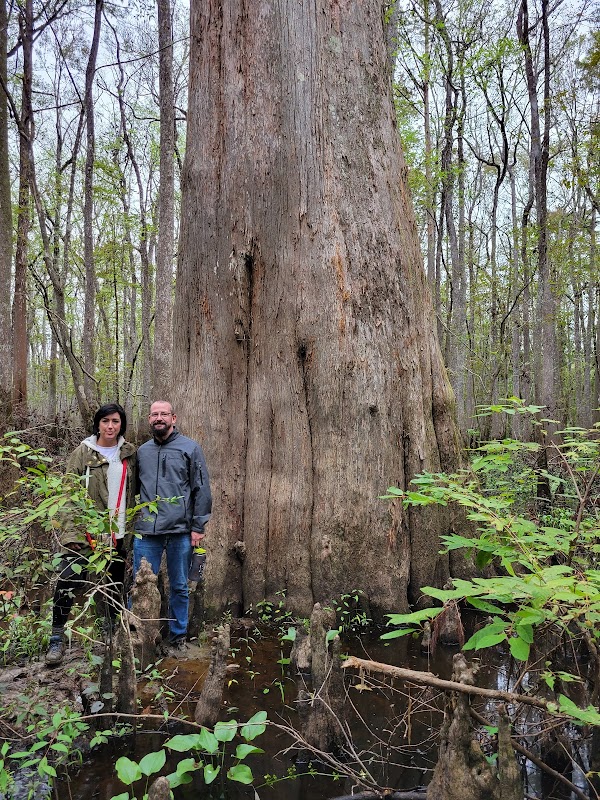
The Pine Belt Trek: On Foot Through Mississippi’s Longleaf Pine Ecosystems
Experience Mississippi’s Pine Belt on foot, where longleaf pine forests shape a robust and scenic hiking adventure. This trek balances rugged natural beauty with practical trail guidance, perfect for hikers seeking both challenge and connection to one of America’s most vital ecosystems.
Secure Proper Footwear
Choose hiking boots with good traction and ankle support to avoid slips on pine needle layers and navigate uneven sandy soil confidently.
Hydrate Strategically
Carry at least two liters of water per person; temperatures and humidity rise sharply midday, so plan your hydration breaks accordingly.
Time Your Trek
Start early or late in the day to avoid midday heat and maximize wildlife spotting during cooler, quieter hours.
Respect Fire Management Areas
Stay on trails during controlled burns and check fire schedules ahead of time to ensure safety and support ecosystem health.
The Pine Belt Trek: On Foot Through Mississippi’s Longleaf Pine Ecosystems
Stretching across the heart of southeastern Mississippi, the Pine Belt offers a uniquely rugged adventure amid the ancient longleaf pine forests. This trek lets hikers move through a landscape fiercely shaped by fire and time—where towering pines reach skyward, their bark textured and weathered, and the ground pulses with a carpet of wiregrass whispering beneath your boots.
Trail distances range from manageable 5-mile loops to a challenging 15-mile backbone route that weaves through terrain with subtle yet steady elevation shifts, rarely exceeding 300 feet but enough to keep your muscles engaged. Expect well-defined sandy paths punctuated with pine needles, occasional patches of pine straw slick enough to demand attention, and intermittent water crossings where creeks dare you to find sturdy stones.
As you walk, the forest breathes around you. Sunlight filters through tall saplings, casting dancing shadows on the understory where wildflowers brave the shade. The scent of pine resin fills the air, sharp and fresh, while distant bird calls invite careful listening. Wildlife—bobwhite quail, gopher tortoises, and shy deer—often reveal themselves in sudden leaves or quick rustles, reminding you that this ecosystem is as alive as any city street.
Practical preparation is key. Footwear with solid grip and ankle support will serve well on uneven sandy loops and slippery pine needles. Hydration is non-negotiable; bring at least two liters per person, increasing amounts during summer months when humidity pulls moisture from your body faster than you think. Early morning or late afternoon starts reduce heat exposure, and timing your trek during cooler months keeps bugs at bay.
The journey is not about overpowering nature but walking in step with something fiercely itself. Respect controlled burns that maintain this habitat’s health, keep to marked trails to protect fragile seedlings, and remember that every footstep interacts with an ecosystem hundreds of years in the making.
Mississippi’s Pine Belt is a landscape you navigate and negotiate—its silent giants watch as you pass, not yielding but offering passage in exchange for respect. This trek promises refreshment for the soul and a clear challenge for the body, steeped in the earthy, pine-scented pulse of the South.
Nearby Trips
All Adventures
Boat Charters
Water Activities
Adventures near Hattiesburg, Mississippi
Discover the unique and memorable adventures that make Hattiesburg, Mississippi special.
Frequently Asked Questions
How long is the typical Pine Belt trek?
Trail options vary from about 5 miles to 15 miles. Hikers often customize routes; a common moderate trek takes 4 to 7 hours depending on pace and chosen path.
Are there water sources along the trail?
Several small creeks cross the trail, but water is not treated or guaranteed year-round. Always carry your own water supply.
Can beginners complete the trek safely?
Yes, with proper preparation. Sturdy footwear and awareness of basic navigation help; less experienced hikers should start with shorter loops.
What wildlife might I see?
Look for bobwhite quail, gopher tortoises, deer, and seasonal birds. Early mornings offer the best chances to spot these creatures.
Is the area safe during controlled burns?
Trails can be closed temporarily during burns for safety and ecological reasons. Check local fire schedules before visiting.
Are dogs allowed on the trek?
Dogs are generally permitted but must be kept on a leash to protect wildlife and comply with local regulations.
Recommended Gear
Sturdy Hiking Boots
Protects feet and ankles from uneven ground and slippery pine needles.
Hydration Pack or Water Bottles
Ensures sufficient water supply for sustained exertion in warm climates.
Lightweight Rain Jacket
Provides protection against sudden showers common in transitional seasons.
Bug Repellent
Defends against ticks and mosquitoes prevalent in warmer months.
Local Insights
Hidden Gems
- "The Pine Belt Scenic Overlook – a quiet spot offering elevated views of the forest canopy."
- "Hidden sinkholes scattered along less-traveled paths provide unusual terrain contrasts."
Wildlife
- "Gopher tortoises known for their slow, steady movement and burrows beneath pines."
- "The elusive red-cockaded woodpecker, a federally protected species, frequents older longleaf pines."
History
"The longleaf pine forests of Mississippi have been shaped by centuries of natural fire cycles and cultural land management, once supporting Native American tribes and later timber economies."
